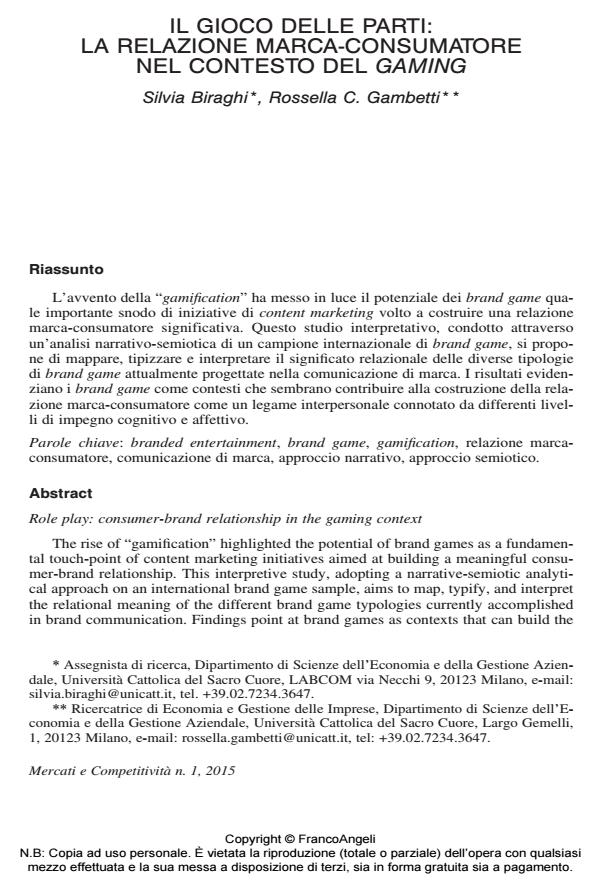Role play: consumer-brand relationship in the gaming context
Journal title MERCATI E COMPETITIVITÀ
Author/s Silvia Biraghi, Rossella C. Gambetti
Publishing Year 2015 Issue 2015/1
Language Italian Pages 25 P. 97-120 File size 119 KB
DOI 10.3280/MC2015-001006
DOI is like a bar code for intellectual property: to have more infomation
click here
Below, you can see the article first page
If you want to buy this article in PDF format, you can do it, following the instructions to buy download credits

FrancoAngeli is member of Publishers International Linking Association, Inc (PILA), a not-for-profit association which run the CrossRef service enabling links to and from online scholarly content.
The rise of "gamification" highlighted the potential of brand games as a fundamental touch-point of content marketing initiatives aimed at building a meaningful consumer- brand relationship. This interpretive study, adopting a narrative-semiotic analytical approach on an international brand game sample, aims to map, typify, and interpret the relational meaning of the different brand game typologies currently accomplished in brand communication. Findings point at brand games as contexts that can build the consumer-brand relationship as an interpersonal bond characterized by different levels of cognitive and affective commitment.
Keywords: Branded entertainment, brand game, gamification, consumer-brand relationship, brand communication, narrative approach, semiotic approach.
Silvia Biraghi, Rossella C. Gambetti, Il gioco delle parti: la relazione marca-consumatore nel contesto del gaming in "MERCATI E COMPETITIVITÀ" 1/2015, pp 97-120, DOI: 10.3280/MC2015-001006